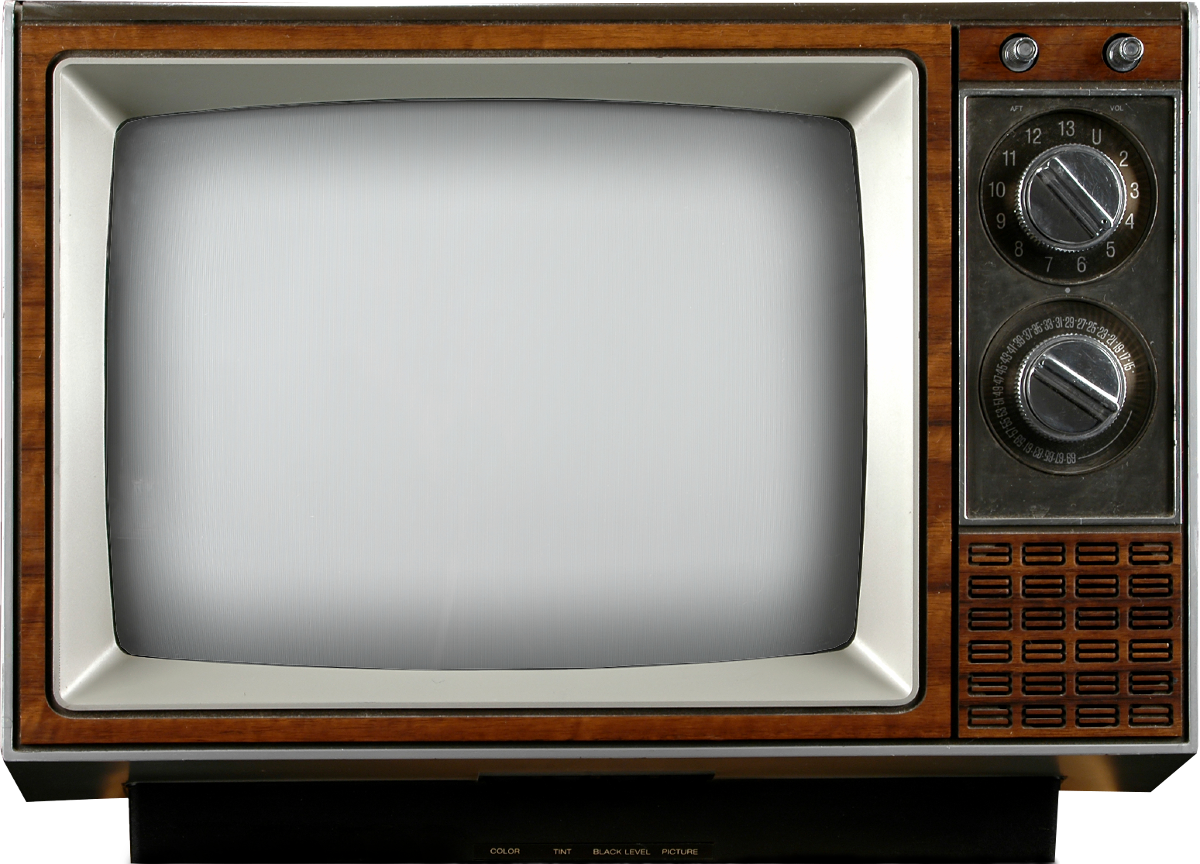Television

Televisions show sounds and pictures. They get data from cables, discs, or over-the-air signals. They turn this data into sounds and images. People watch news and shows on them. You probably call them TVs.
John Baird made the first TV in 1925. It had one color. It could only show 30 lines. This was just enough room for a face. It didn't work well, but it was a start.
The first TV station was set up in 1928. It was in New York. Few people had TVs. The broadcasts were not meant to be watched. They showed a Felix the Cat doll for two hours a day. The doll spun around on a record player. They were experimenting. It took many years to get it right.
By the end of the 1930s, TVs were working well. America got its first taste at the 1939 World's Fair. This was one of the biggest events ever. There were 200 small, black and white TVs set up around the fair. The U.S. President gave a speech over the TVs. The TVs were only five inches big but the people loved it.
They wanted TVs. But World War II was going on during this time. Factories were busy making guns and bombs. When the war was over, TV spread across the country. By 1948 there were 4 big TV networks in America. They aired their shows from 8 to 11 each night. Local shows were aired at other times. Most of the time, nothing was shown at all.
TV was not "always on" like it is now. Color TVs came out in 1953. They cost too much money for most. Also, shows were aired in black and white. By 1965, color TVs were cheaper. TV stations started airing shows in color. People had to switch if they wanted to see the shows.
Now most TVs are high-def. This means that they have many lines on them. This makes the image clear. TVs have come a long way since Baird's 30 line set. High-def TVs have 1080 lines. There are state of the art sets called 4K TVs. These TVs have 3,840 lines. Some people watch TV in 3D. I wonder what they will come up with next. Smell-o-vision anyone?
Questions
1. When did color TVs come out?
a. 1925
b. 1953
c. 1939
d. 1965
2. Which was not true about the first TV?
a. It could only show one color
b. It only had 30 lines
c. It did not have sound
d. It did not work well
3. When did networks start showing programs in color?
a. 1948
b. 1953
c. 1965
d. 1939
4. Why did the first TV station only show Felix the Cat for two hours a day?
a. They were running tests.
b. Felix the Cat was really popular.
c. Felix the Cat had been a big radio star.
d. Felix the Cat was the only show that they had.
5. Which of these events slowed the spread of TVs?
a. The World's Fair of 1939
b. The Civil War
c. The election of the U.S. President.
d. World War II
6. What is the author's main purpose in writing this?
a. He is trying to explain how a TV works.
b. He is telling readers how TVs became popular.
c. He is describing the history of the TV.
d. He is trying to get people to watch more TV.
7. Why did many families switch to color TVs in 1965?
a. Color TVs cost a lot of money.
b. Many shows were only shown in color.
c. Color TVs came out in 1965.
d. World War II ended and troops returned home.
8. Why was 1939 an important year for TV?
a. Many Americans were introduced to TV.
b. The first color TV was released.
c. The first TV station began broadcasting.
d. John Baird created the first TV.
9. How many lines does a 4K TV have?
a. 30
b. 1,080
c. 4,000
d. 3,840
10. Which happened first?
a. The 1939 World's Fair
b. The release of high-def TVs
c. The end of World War II
d. The release of color TVs
11. Why would watching TV have been boring in 1928?
Because they could only watch it one time a day and they did not have color.
12. Why did the 5 inch black-and-white TVs at the World's Fair impress people?
13. Why would it have been a bad idea to buy a color TV when they first were released?